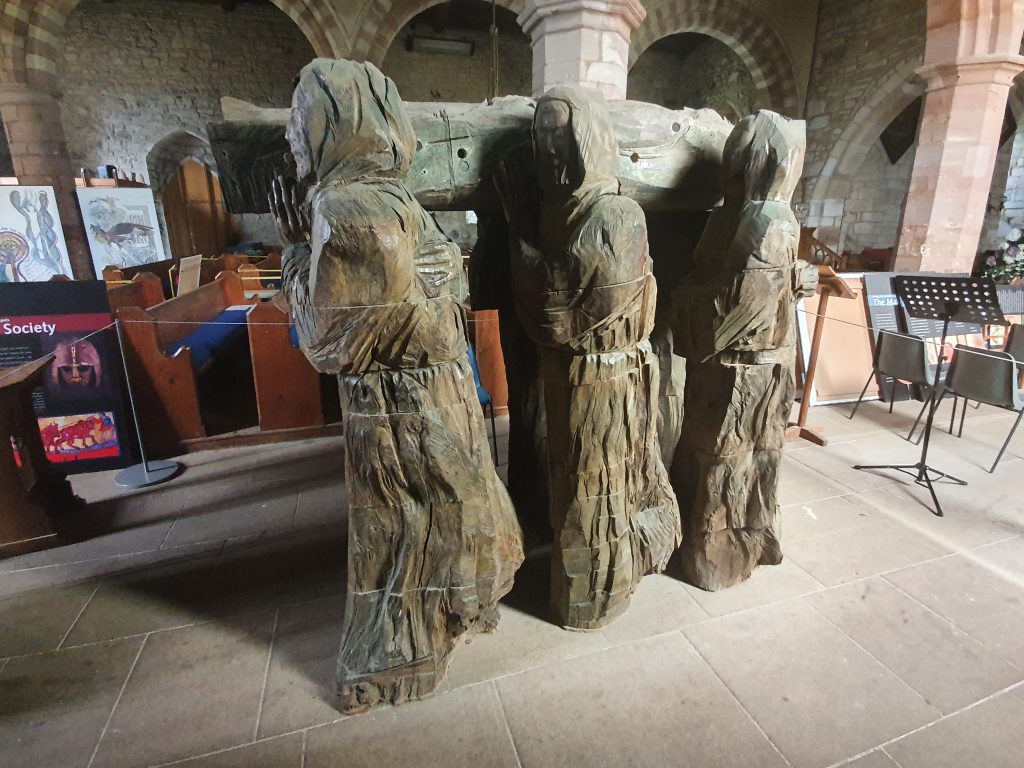St. Cuthbert’s Way – St. Cuthbert
St. Cuthbert’s Way – Resources and Index
Since I’ve now completed St. Cuthbert’s Way, it seems appropriate to briefly mention who Cuthbert actually was.
He was born in around 634 in Dunbar and when young, he decided to join the relatively new monastery at Melrose. This incidentally now marks the beginning of the walking route, with the end being at Cuthbert’s initial burial place at Holy Island. Following a childhood miracle, Cuthbert seems to have been spiritual and religious, which is handy for someone in a monastery, and he became the prior of the abbey.
Apparently (and this is primarily because Bede wrote about it in the early eighth century, so a record still exists) Cuthbert was:
“Angelic in appearance, refined in conversation, holy in works, unblemished in body, noble in nature, mighty in counsel, orthodox in faith, patient in hope and wide in charity”. He sounds a perfect choice to enter the religious order…..
Cuthbert was consecrated in York by Archbishop Theodore on 26 March 685. He returned to Inner Farne Island and he died there on 20 March 687. On the same day he was brought over and buried on Holy Island, which is where he remained until 865 when the threat of a Danish invasion led to the monks abandoning the priory and taking Cuthbert’s body with them. The monks carted his remains about for seven years, which is quite an impressive feat as it sounds a right hassle. In the end, after numerous intermissions he was being moved about until at Durham his body wouldn’t move from a certain spot. So, a church was built there and that today is the site of Durham Cathedral. Someone more sceptical might suggest that the monks got fed up with carrying him about and just selected a nice place to build a church, but that’s not really in the religious stories that are told.
Bede noted that eleven years after Cuthbert’s death his coffin was opened and no doubt to the considerable surprise of everyone present “found his body entire, as if he were still alive, and his joints were still flexible, as if he were not dead, but sleeping. His clothes, also, were still undecayed, and seemed to retain their original freshness and colour”.
Cuthbert’s reputation grew, not least after Alfred the Great had a vision of him and made great play of that, although that might have been a political ploy in uniting the country. His grand marble shrine developed into a place of pilgrimage at Durham Cathedral, but that was a bit smashed up following the Reformation. His coffin had been opened a few times and hadn’t decayed, although more recent openings have shown that is no longer the case. Fragments of the original Saxon coffin that he was buried in though survive and are on display at Durham Cathedral, as are sections of later coffins that his remains were transferred into.
Charles Eyre wrote an important book on St. Cuthbert in the late nineteenth century and this was frequently republished. It’s ridiculous in places, such as the statement he makes:
“We cannot doubt a single word that Bede has written for he introduces his narrative saying ‘I beg that my readers will believe what I say'”.
Bede was writing about Cuthbert a century after his death, so even if we believe Bede, he’s still got his information second-hand. Anyway, I like how Eyre notes that residents of villages would confess all their sins if Cuthbert visited, such as was their respect and awe for him. I could quite fancy having an ability like that, having everyone tell me what they’ve done wrong when I enter a room….
BOOKS ABOUT ST. CUTHBERT





